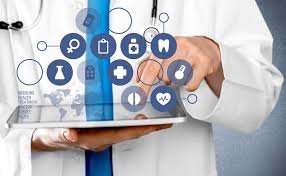
When observing the advances in technology, the concentration is often on the innovations that represent major ruptures and ignores the many advances that are occurring and impacting daily life. Precisely doing an analysis of Digital Health, the technology applied to health, we discover an extensive new world that includes more than 380,000 mobile apps and the very use of social networks that are changing the lives of patients and doctors.
Companies in Health Technology are strongly promoting the digitization of health, introducing innovative tools such as "digital pills" that track patients when they take their medicines and the "smart spoons" that automatically adjust to the tremors of the hands of patients, like Parkinson's. There are doctors who treat patients addicted to substances such as cocaine and amphetamines by prescribing an App, which gives the patient lessons that help modify their behavior. These are part of a new category of medical treatments by prescription called Digital Therapeutics.
Mobile Apps for Health
Digital Health is in a stage of accelerating innovation. Mobile Apps for Health not only exceed 380,000, their number has doubled since last year and 200 apps are added daily. To this we must add more than 340 wearable devices for the consumer. More than 50% of the apps use sensor data and these new devices are on track to replace the bulky traditional devices.
The use of Digital Health Apps in five patient populations has achieved proven reductions in acute care (prevention of diabetes, diabetes, asthma, cardiac rehabilitation and pulmonary rehabilitation) and could save the US health system US $ 7 billion annually. This represents approximately 1.4% of the total cost of these populations and if this level of savings is extrapolated to the total health expenditure it is talking about a savings of US $ 46,000 million annually.
The digital path of the patient
Today there are apps and sensors for each of the phases of a patient's journey, with a wide range of categories of digital use for each phase:
Wellness and prevention - The categories include Exercise and Physical Fitness, Diet and Nutrition, Lifestyle and Stress, Stress Management, Sleep / Insomnia, Abandonment of Smoking and Alcohol Moderation.
Symptoms and Medical Care Search - General Health, Information, Verification of Symptoms, Location of Doctors, Management of Clinical and Financial Information and Social Networks.
Diagnosis - For this stage the doctor can recommend: disease management programs enabled for Apps, connected sensors for remote monitoring or Apps for use in any area of the patient's travel.
Monitoring of the condition - This includes Self-monitoring, Remote Patient Monitoring, Rehabilitation Programs managed by Apps.
Treatment - The management of Prescriptions and Compliance includes Discounts on Prescriptions, Delivery of Prescriptions, Administration of Medicines and Compliance with treatments.
Digital Bio-markers
They correspond to the use of connected sensors, wearables and mobile devices and their capture of bio-marking data (any substance, structure or body process, their actions or products) to predict the incidence of disease or health conditions, the follow-up of these or the assessment of the effects of treatments or interventions. These can include physiological or behavioral measurements generated by the user and collected by the sensors and processing units of the digital devices (such as a smartphone, for example). The value of the Digital Bio-markers is derived from their ability to be tracked passively and continuously in real time to explain, influence or predict results associated with health.